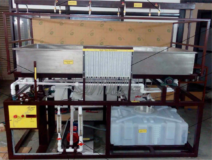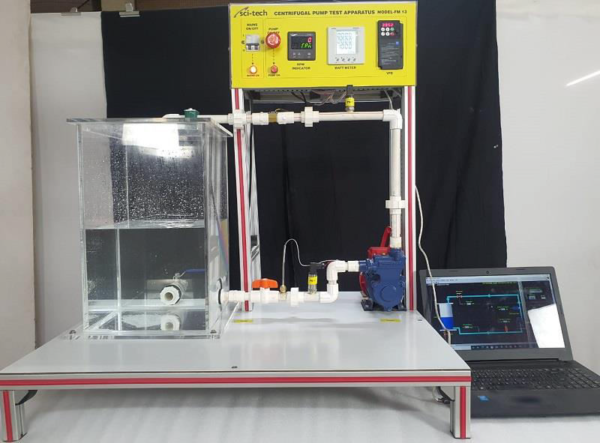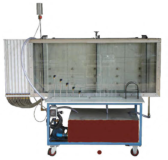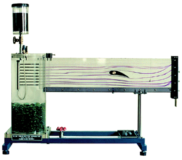Centrifugal Pump Test Apparatus MODEL FM 13
Home » Products » Centrifugal Pump Test Apparatus MODEL FM 13
Centrifugal Pump Test Apparatus MODEL FM 13
The Sci-tech Centrifugal Pump Test Apparatus Model FM 13 has been designed to enable students to study the operation and performance characteristics of a typical centrifugal pump. The module consists of a variable speed centrifugal pump assembly having an independent discharge manifold interconnected by plastic tubing with quick release connectors. The pump is driven by a AC motor of adjustable speed. The motor is suspended and the driving torque is determined with a torque wrench. The motor speed and power consumption are digitally displayed on the control panel. The pump can be connected to the Sci-tech Hydraulic Bench FM 100 or any other hydraulic bench models to supply and re-circulate water. Bourdon tube pressure gauges are mounted at the inlet and exit of the pump to measure increase of head across the pump. The independent discharge manifold has a pressure gauge and a flow control valve upstream of the discharge pipe and the diffuser. The flow rate through the system is measured using the measuring tank of the hydraulic bench and can be checked independently by the water flow meter fixed in the discharge.
| Size: | 70cm x 50cm x 50cm (LxWxH) |
| Weight: | 20 kg |
Item Description
Centrifugal pumps are widely used for pumping liquids in several applications including domestic, industrial, irrigation and drainage. Energy is supplied to the pump by an electric motor and the potential energy of the liquid is increased by the action of the impeller rotating inside a volute casing. It is essential for students to understand the operation and performance characteristics of centrifugal pumps. The Sci-tech Centrifugal Pump Test Apparatus Model FM 13 is an experimental set-up necessary for any Fluid Mechanics and Hydraulics Laboratory of an educational institution.
The Sci-tech Centrifugal Pump Test Apparatus Model FM 13 has been designed to enable students to study the operation and performance characteristics of a typical centrifugal pump. The module consists of a variable speed centrifugal pump assembly having an independent discharge manifold interconnected by plastic tubing with quick release connectors. The pump is driven by a AC motor of adjustable speed. The motor is suspended and the driving torque is determined with a torque wrench. The motor speed and power consumption are digitally displayed on the control panel. The pump can be connected to the Sci-tech Hydraulic Bench FM 100 or any other hydraulic bench models to supply and re-circulate water. Bourdon tube pressure gauges are mounted at the inlet and exit of the pump to measure increase of head across the pump. The independent discharge manifold has a pressure gauge and a flow control valve upstream of the discharge pipe and the diffuser. The flow rate through the system is measured using the measuring tank of the hydraulic bench and can be checked independently by the water flow meter fixed in the discharge.
The Sci-tech Centrifugal Pump Test Apparatus is a compact unit and all components and instrumentation are placed in a robust and mobile frame.
See also different:

Sci-tech Rainfall Hydrographs Demonstrator Model FM 69 is designed to study rainfalls in laboratory. The unit consists of a tank filled with gravel. Water is supplied by overhead nozzles & water flow is controlled by a flow control valve. [...]



